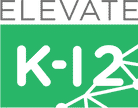Teacher recruitment and retention are essential to student success, particularly in low-income school districts. However, thanks to diminishing pensions, impossible workloads, low salaries, and more, school leaders struggle with recruitment.
Limited resources put administrators and the Department of Education alike in a seemingly impossible situation. Education quality drops because schools can’t keep qualified teachers, but they don’t have the resources to recruit competitively.
Fortunately, there are effective ways to make the most of the resources you do have and attract the right teachers to your district, and we’ll examine those solutions here.
What Does Teacher Recruitment Look Like Today?
In most regions, whether it’s public schools or charter schools, teacher recruitment issues boil down to a lack of qualified applicants and too many vacancies. Current teachers are opting for either retirement or career changes, while young graduates flock away from the profession.
In Pennsylvania alone, 9,500 teachers left their teaching jobs during the 2022–2023 school year. State Representative Robert Merski remarked on the turnover rates:
“The job is unattractive to college graduates; nobody wants to do it, and they wonder why. Well, when you have half a pension, and you have pay freezes year after year, it becomes unattractive when they can go into the private sector and get bonuses and benefits just for getting hired.”
Merski leads the fight to improve teacher conditions in his state, and he’s certainly not alone. However, this kind of support in America is patchwork at best, and it’s going to take some time to undo the past few decades of dwindling returns for teachers.
The more districts struggle with teacher shortages, the more inconsistency students can expect. They might have one teacher with endless subject-matter expertise, only to cross the hall and find a teacher with a rudimentary understanding of the material at best.
Students may form strong relationships with an authoritative presence in one grade level, only to find a rotating cast of characters the next. When students feel tossed around, they inevitably grow to resent more than just their homework. School leaders will inevitably see the impact of these negative feelings in everything from GPAs to graduation rates.
3 Important Factors for Attracting High-Quality Teachers
Thankfully, attracting high-quality new teachers doesn’t necessarily mean tripling teacher’s salaries. We’ll look at how school district leaders can leverage their resources to mitigate the teacher shortage and keep high-quality educators on staff.
1. Employer Branding
Effective teachers know that every school has its own “flavor,” made distinct by both students and staff. Of course, it’s not always apparent what the job will be like until they’re knee-deep in the school year. Whether you’re presenting the school on a webpage or at a job fair, branding helps solidify a potential recruit’s understanding of the culture.
Employer branding distinguishes the school’s values and culture, which can help you attract the right professionals.
For example, if you subscribe to the Multiple Intelligences (MI) model, you might discuss the broad strokes of how teachers integrate the theory in the classroom. Or, if you value ongoing teacher education, you might list unique opportunities that set your district apart.
While teaching specialties range from special education to vector calculus, branding helps you find teachers with a deeper connection to your school’s overall mission.
2. Competitive Benefits
The national teacher’s salary average is under $70,000 per year. To be competitive, district leaders need to at least meet the average and add healthcare, retirement planning, paid time off, and professional development.
However, competitive, comprehensive packages go beyond low health insurance deductibles and high pensions. From work-life balance to smaller classroom sizes, schools can distinguish themselves in various ways to attract the most qualified teachers.
So, even if a salary is below average, a positive school culture and engaged students may still entice a prospective teacher.
To find out what matters, school leaders may need to take a microscope to the needs and preferences of current educators in their area. Gathering feedback, whether through surveys or during reviews, can help you understand how teachers experience the resource crunch on a day-to-day basis.
For many teachers, it’s a strict financial equation. But it’s equally important to address the ancillary complaints (e.g., poor communication, spotty student attendance, etc.) to grasp the extent of the problem. From there, you can make changes to better align benefits with teacher values.
3. Use of Technology
Technology can streamline the hiring process and enhance the teaching environment. For example, an Applicant Tracking System (ATS) wades through online applications and helps you narrow down your options so you can focus your time on the best candidates.
You can also leverage social media for applicant outreach, giving followers a chance to tag or share the posting with prospective teachers. If you’re in a school district with highly involved parents, you can trust they’ll use their networks to lobby for the best candidates.
Of course, the use of technology can extend far beyond the onboarding process. Classroom management tools and online resources for continuous learning help teachers organize their classrooms and address the ongoing need for professional development.
Tips for Evaluating Teacher Candidates for Long-Term Success
Finding long-haul teachers takes some effort, especially after the upheaval of the pandemic, but you’ll be glad you went the extra mile. To avoid the constant disruption of teacher turnover, we have a few tips to keep in mind.
Comprehensive Interview Process
Your interviews should assess official teacher certifications, technical skills, and soft skills. Behavior-based interviewing techniques provide insight into the candidate’s past, which can help you predict how they’ll act in the future.
You might ask the teacher about a time when they confronted difficult or unreasonable parents, what actions they took, and the final outcome. Or you might ask the teacher to recount a challenging decision they made and reflect on the pros and cons of each possible strategy.
These questions help you understand how a teacher reasons through complex problems, particularly as they pertain to different parents, students, and colleagues. It can also help you assess whether the teacher is open to changing their viewpoints or considering new conflict resolution tactics.
Value Alignment
When the school’s values and teacher’s values align, there’s less friction between the teacher and supervisors, which results in a more harmonious learning environment. Teachers may not always agree with every district decision, but their general goals should mimic those of their employers.
You can assess values during interviews via role-playing activities, personality tests, scenario-based questions, or simple discussions about the teacher’s personal opinions and priorities.
For example, if the teacher believes their job is to enforce state-wide criteria, they may clash at a school that encourages creativity. If the teacher pictures themselves as a lone wolf out to change the system, everyone will be frustrated if they’re at a school where collaboration is key.
Continuous Feedback or Trial Periods
Ongoing feedback after the hiring process helps teachers and supervisors remain in sync. It gives everyone the chance to spot and resolve small issues before they balloon into resentment on either side.
You can also implement trial periods for potential hires, such as guest teaching sessions or temporary contracts. These solutions allow both you and the teacher to assess the fit before anyone makes the final commitment.
The truth is that even the most desirable school districts have their issues. You want the candidate to have a clear, long-term picture of what they’re up against, so they can decide whether they’re ready for the challenge.
How Elevate K-12 Makes the Teacher Recruitment Process Even Easier
The above steps and strategies are tried-and-true tactics for better hiring. They’re also exceptionally time-consuming, requiring school administrators to measure multiple candidates using a variety of yardsticks, even after they fill the teacher post.
If your district is already drowning, you likely don’t have the resources to devote to lengthy trial periods or interviewing sessions.
To streamline the process, Elevate K-12 takes staffing to a new level. We act as a teaching partner to strapped school districts, breaking down geographical barriers to give them access to a larger qualified applicant pool.
Our LIVE teaching method puts qualified teachers into classrooms, regardless of their location. By thoroughly vetting our teachers using strong eligibility criteria, we ensure that they have the subject-matter expertise and authoritative presence for each course and grade level.
At Elevate K-12, we also provide ongoing support for teachers, ensuring their work and accomplishments are recognized and appreciated. We also integrate technology to ensure faster assessments and, above all, consistency for students.
Our teachers value ongoing development and are receptive to everything from constructive criticism to new research in their fields.
We’ve seen how high teacher turnover and poor teacher quality affect student trust. If children don’t have stability in the classroom, it devalues the instruction they receive. Our services are convenient and comprehensive, our clients notice an immediate improvement in teacher quality when they work with us.
Reinvent Your Teacher Recruitment Process With Elevate K-12
There’s nothing easy about hiring teachers today, particularly if you’re in a resource-starved district. Regardless of your individual challenges, though, Elevate K-12 can help you allocate resources more effectively, innovating your recruitment strategies and cutting down on the onus of onboarding.
The teaching profession takes a lifetime to perfect, making experience worth its weight in gold. If you’re having trouble finding people with enough time on the job, it may be time to expand your horizons.
If you’re ready for a better recruitment strategy, contact Elevate K-12 today!

